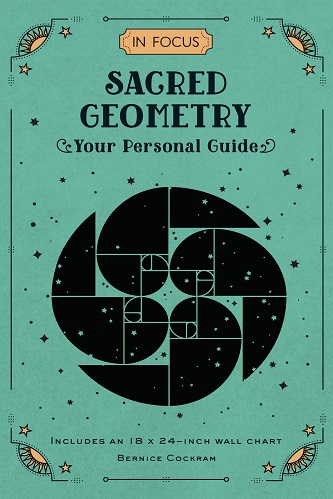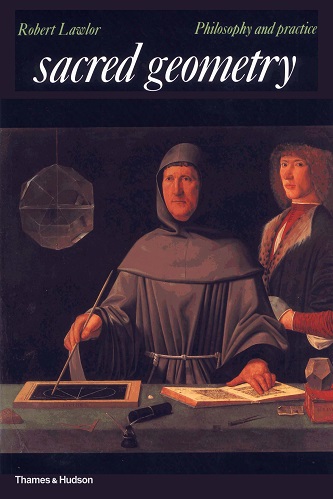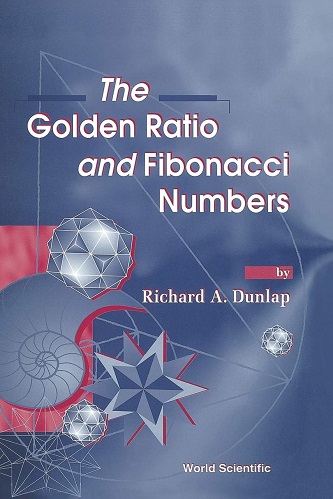In Focus Sacred Geometry: Your Personal Guide
12.37 $
| Author(s) |
Bernice Cockram |
|---|---|
| Format |
|
| Pages |
229 |
| Published Date |
2021 |
With In Focus Sacred Geometry, learn the fascinating history behind this ancient tradition as well as how to decipher the geometrical symbols, formulas, and patterns based on mathematical patterns. People have searched for the meaning behind mathematical patterns for thousands of years. At its core, sacred geometry seeks to find the universal patterns that are found and applied to the objects surrounding us, such as the designs found in temples, churches, mosques, monuments, art, architecture, and nature.
The In Focus series applies a modern approach to teaching the classic body, mind, and spirit subjects. Authored by experts in their respective fields, these beginner’s guides feature smartly designed visual material that clearly illustrates key topics within each subject. As a bonus, each book includes reference cards or a poster, held in an envelope inside the back cover, that give you a quick, go-to guide containing the most important information on the subject.
Introduction:
What is sacred geometry? Geometry at its basic level is the design of shapes based on mathematics; geometry literally means “earth measure,” as geo refers to the earth and metry to measurements. Geometric shapes are so much a part of our everyday life that we may not even notice just how frequently they can be found. Hopefully, after reading this book, you will start to see many examples that you never noticed before.
Mathematicians have studied geometry for thousands of years. The early mathematicians marveled at the perfection of their calculations, and they attributed this perfection to the Creator—this is how geometry came to be sacred. Geometry began to be used in a symbolic way, especially in religion, due to the fact that the general population were not able to read and write, but they were able to recognize shapes. Some shapes were also used symbolically in secret societies, where only the members of the society would understand their meaning.
The History of Sacred Geometry:
People have searched for the meaning behind mathematical patterns for thousands of years. The Egyptian Rhind Papyrus from ca. 2000–1800 BCE is one of the earliest known writings on geometry, along with the Moscow Papyrus from ca. 1890 BCE and the Babylonian clay tablets of ca. 2000–1800 BCE. Some of the most notable published discoveries are works from:
- Thales of Miletus (ca. 624–ca. 546 BCE), a Greek mathematician, discovered that geometry could be used to calculate the height of pyramids and also a ship’s distance from the shore.
- Pythagoras (ca. 570–ca. 495 BCE), a Greek philosopher, set up a school to study geometry in ca. 530 BCE. His students were referred to as Pythagoreans.
- Plato (ca. 427–347 BCE), a Greek philosopher, was the founder of the Academy in Athens and discovered the Platonic solids.
- Euclid (ca. 330–275 BCE), a Greek mathematician, had his findings published in a 1570 book called Elements that was a collection of geometric studies from several mathematicians.
- Archimedes (ca. 287–212 BCE), a Greek mathematician, created the Archimedean solids and the Archimedean spiral.
- Leonardo Pisano (ca. 1170–after 1240), better known as Fibonacci, was an Italian mathematician who wrote Liber Abaci (Book of the Abacus) in which he introduced the number series today referred to as the Fibonacci sequence.
- Luca Pacioli (ca. 1447–1517) was an Italian mathematician who wrote Divina Proportione (Divine Proportion), a book about mathematical proportions in architecture, polygons, art, and which was illustrated by Leonardo da Vinci.
- Johannes Kepler (1571–1630 BCE) was a German mathematician and astronomer. Although most commonly known for his observations on the paths of the planets, he also made some important discoveries with geometry.
There have been many other mathematicians that have advanced our appreciation for and understanding of the patterns and symbolism of sacred geometry, but those above are referred to later in the book. Another very important name is Drunvalo Melchizedek. He introduced sacred geometry to the world in a series of workshops from 1985 to 1994. If you would like to find out more about sacred geometry, I would highly recommend reading some of his work.
Throughout this book you will discover many different shapes and their meanings as you learn about the shapes themselves as well as how sacred geometry appears in letters, numbers, art, architecture, and religious symbols. You will even find out about the math behind it all. After all, sacred geometry appeals to us on many levels, as the shapes formed are often symmetrical and balanced; we are always subconsciously seeking balance in mind, body, and spirit, and so people use these shapes just about everywhere in the world.
Sacred geometry can be incorporated into your own everyday life and spiritual practices in a number of ways: through artwork, room and garden design, meditations, and visualizations, to name just a few. As you learn more about the shapes and the many places they can be found, you will find suggestions for different ways of working with sacred geometry.
Contents:
- Two-Dimensional Shapes
- Three-Dimensional Shapes
- Platonic Solids
- Semi-Regular Polyhedra
- Spirals
- Numbers in Sacred Geometry
- Symbolic and Geometric Letters
- Place Where Sacred Geometry Is Found
- Sacred Geometry in Religious Symbolism
- How You Can Use Sacred Geometry
In Focus Sacred Geometry: Your Personal Guide By Bernice Cockram pdf




Reviews
Clear filtersThere are no reviews yet.